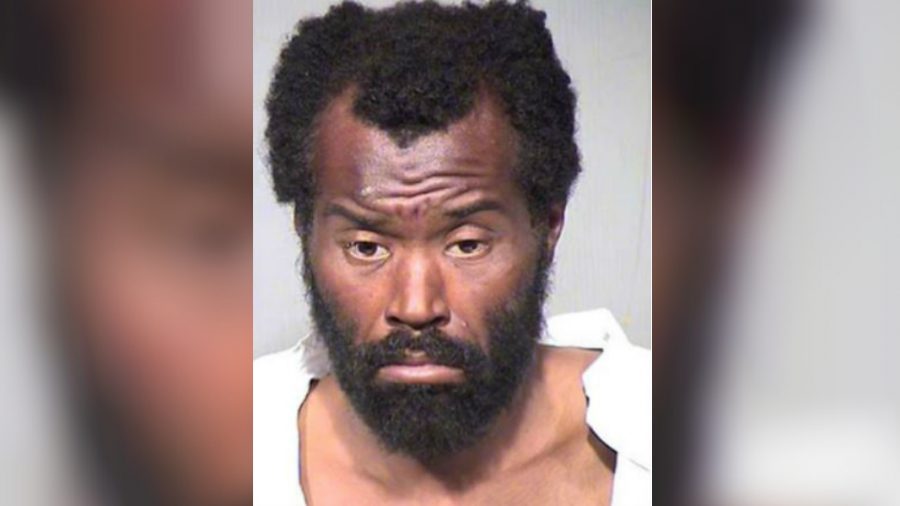A 23-year-old Arizona man was killed after he was punched by a homeless man, causing him to fall into traffic, police officials said.
The situation unfolded in Phoenix on March 25.
The Phoenix Police Department said that R.J. Dunton, the victim, was found critically injured on 19th Avenue.
He was rushed to a nearby hospital where he later died, reported Fox 10.
Investigators determined that Aaren Shivers, 37, punched Dunton near the side of the road, causing the victim to fall into traffic. He was then hit by a car.
The driver showed no signs of impairment.

Witnesses told 3 TV that Dunton was walking on the east side of 19th Avenue when Shivers walked up to him and punched him.
Surveillance video from a city bus that was traveling behind the vehicle that struck the victim showed Shivers “intentionally striking Dunton with a closed fist to his face.”
Shiver was taken in for an interview, where he told officers that the victim said “something unknown to him.” Shivers punched Dunton. He said he’d never seen the victim before the incident.
Shivers was arrested and booked into jail on a count of second-degree murder.
According to Dunton’s Facebook page, he worked at Phoenix Job Corps and did deliveries for Postmates and Uber Eats.
Gina Read, a close friend of Dunton, told 3 TV that he was a sweet man.
“He was able to get himself off of the streets and he had his own apartment and was doing really well. I just couldn’t believe it,” Read said. “He was such a sweet and kind kid. He always had time to listen to anyone who wanted to say anything. If they needed anything he was the first one to step up.”

Homeless Statistics
According to a 2018 U.S. Department of Housing and Urban Development report (pdf), on a single night in that year, roughly 550,000 people were experiencing homelessness, a slight decrease from the prior year.
For every 10,000 people in the United States, 17 were experiencing homeless, the agency said.
Approximately 65 percent of the homeless were staying emergency shelters or transitional housing programs while about 35 percent were in unsheltered locations.
From 2016 to 2017, the number of homeless people increased for the first time in seven years, by a little less than one percent. Increases in the number of homeless people living without shelter in the nation’s 50 largest cities accounted for nearly all of the national increase. From 2017 to 2018, the number of homeless people without shelter increased by three percent.


California, New York, Florida, Texas, and Washington state were the states with the highest number of homeless people. California alone had 24 percent, or 129,972 people, of the people experiencing homelessness on a single night in January.
New York had about 91,900 people experiencing homelessness (17 percent); Florida had about 31,000 people (6 percent); Texas had about 25,000 people (4 percent); and Washington had about 22,300 people (4 percent).
While the national average was 17 homeless people per 10,000 population, New York state had 46 homeless people per 10,000, Hawaii had 46 homeless people per 10,000, Oregon had 35 homeless people per 10,000, and California had 33 people per 10,000 people.
About seven out of 10 homeless people were over the age of 24 while some 60 percent were male. About 49 percent were white while about 40 percent were African-American.

